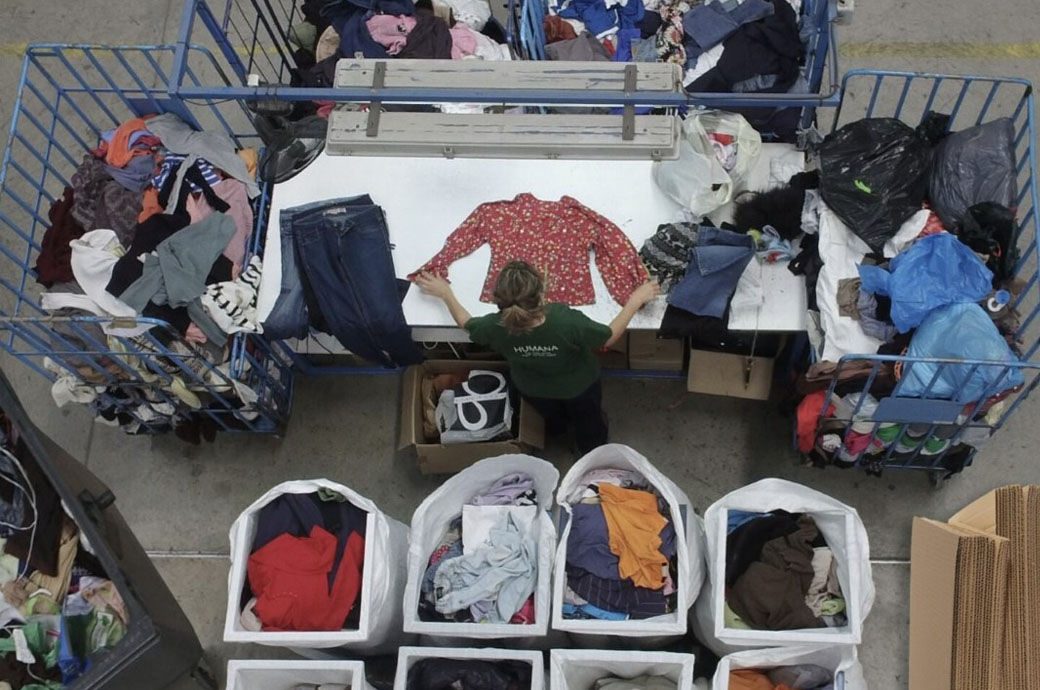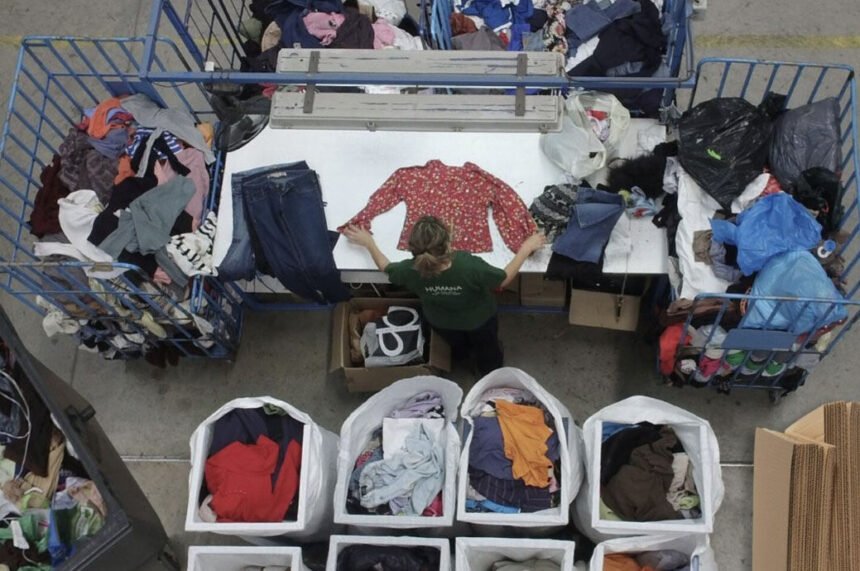[ad_1]

The second-hand clothing sector—a crucial element in the shift towards a circular textile economy—contributed an estimated total of €7 billion (~$7.6 billion) to the EU and UK’s GDP in 2023, with the sector itself generating €3.0 billion (~$3.2 billion), as per a recent report. In Germany and the UK alone, the industry contributed €670 million (~$720 million) and €420 million (~$450 million) to GDP, respectively.
In 2023, the sector supported an estimated 150,000 jobs in the EU27+. Of these 110,000 were green jobs directly in the industry, with opportunities particularly for people with little formal education. Eight out of 10 (79 per cent) of the workforce were women, and many employment opportunities were created in lower-income countries such as Bulgaria, Romania and Poland, according to the report titled ‘The Socio-Economic Impact of Second-Hand Clothes (SHC) in Africa and the EU27+’.
Second-hand clothing sector contributed $7.6 billion to EU and UK’s GDP in 2023, supporting 150,000 jobs, including 110,000 green jobs.
A recent report highlights the sector’s role in driving sustainable growth, mainly in lower-income countries.
The report calls for supportive policies to boost the sector’s potential as a key player in building a circular economy and addressing climate goals.
The report was commissioned by Humana People to People and Sympany+. It is the first comprehensive analysis of the sector’s entire value chain and an attempt to quantify the sector’s socio-economic impacts across two continents. It addresses existing knowledge gaps, offering insights that were previously unavailable at this scale, focusing on the EU27+ and Ghana, Kenya and Mozambiqu
The SHC sector’s success relies on a well-established value chain between the global north and the global south, generating economic value and green jobs at each stage. The sector bridges global supply and demand by efficiently channelling used clothing from the global north to the global south, where demand for affordable, quality garments continues to grow, ensuring that clothing stays in circulation, helping to meet climate targets and protect the environment. The sector also contributes to poverty alleviation by creating employment and entrepreneurship opportunities for those who might otherwise be unemployed or underemployed, enabling people to support dependents, as per the report.
In Ghana, second-hand clothing from the EU27+ contributed an estimated $76 million to the country’s GDP (of which $35 million was direct), supporting 65,000 formal and informal jobs in 2023. That same year, $17 million was contributed to Kenya’s GDP ($9.2 million directly) and $10.7 million to Mozambique’s ($2.7 million directly). There were 6,300 people in Kenya’s formal workforce and at least 68,000 working informally. In Mozambique, 5,700 formal jobs were supported and at least 15,000 informal jobs.
Up to 47 per cent of imported second-hand clothing to Ghana was from the EU27+ last year. This compares to Mozambique’s direct imports from EU27+ accounting for 18 per cent and Kenya’s 13 per cent (not including imports arriving via intermediary countries). Only in Ghana are SHC imports from the EU27+ growing. In Kenya and Mozambique, while overall SHC imports continue to grow, the EU share is falling.
“This report highlights the immense potential of the second-hand clothing sector to drive sustainable economic growth and create green jobs across continents. Now, more than ever, it is essential for policymakers to recognise the value of this industry and provide the legislative support and investment needed to unlock its full potential as a central factor for building a more resilient, circular economy that benefits both people and the planet,” Karina Bolin, president of Humana People to People Italy and Bulgaria, said.
“Second-hand clothing is often overlooked in the broader debate on sustainable development, yet this report clearly shows its economic power. By keeping clothes in circulation and creating green jobs in both Europe and Africa, the sector delivers significant economic and social benefits. Our findings underscore the need for policies that support and strengthen this circular industry – ensuring it continues to serve as a bridge between environmental sustainability and inclusive economic growth,” Johanna Neuhoff from Oxford Economics, said.
The report shows that without the right regulatory framework, this green and sustainable sector risks losing its competitive edge to fast fashion manufacturing giants like China, which continue to dominate global textile markets producing new, cheaper, lower quality garments, at a huge environmental cost.
Discussions at EU level to finalise amends to the Waste Framework Directive, which affects the second-hand clothes trade, are due to commence later this month. This report urges decision makers involved in these discussions to support textile reuse operators. With mandatory separate textile collection coming into force across the EU in January 2025, it is imperative for these discussions to begin and reach a deal swiftly, providing certainty to the sector.
If steps are not taken to strengthen the EU’s SHC sector, its success in supporting European green policy goals, national climate targets in Africa and the Sustainable Development Goals, particularly around poverty, women’s inclusion and responsible consumption, could be undermined.
[ad_2]
Source link









